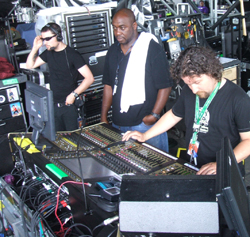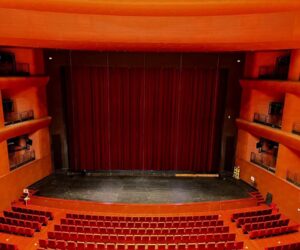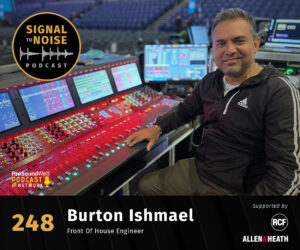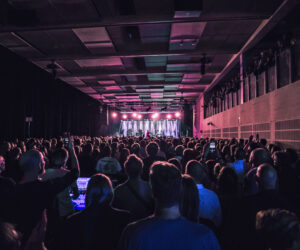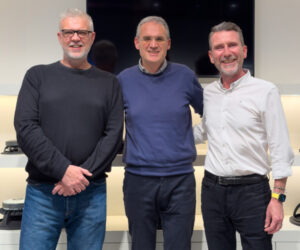Eighth Day Sound recently did double-duty on two major events, the Hot 97 Summer Jam at Giants Stadium in New York, and then moving south to the Bonnaroo Music and Arts Festival in Tennessee. In both cases, the Highland Heights, Ohio-based sound reinforcement company provided four DiGiCo SD8 digital mixing consoles.
At the annual Hot 97 Summer Jam, Eighth Day supported all acts, including Mary J. Blige, Jadakiss, T-Pain, Young Jeezy and Elephant Man, while at Bonnaroo, they handled the main music stage (in addition to a handful of the secondary stages) for a diverse lineup that included Erikah Badu, Wailing Souls, Snoop Dogg, Galactic, The Itals, and Rodrigo Y Gabriella.
For each event, Eighth Day Director of Touring Operations Owen Orzack specified two sets of DiGiCo SD8 consoles—two at FOH and two on monitors.
“Budgets and specs for these festivals were calling for another console,” explains Orzack. “We wanted to offer a console that would fit the same budget, but would also provide a sonic upgrade. The SD8 specifically offered features that lent themselves to this kind of event: great sonics, reliability, ease of use for the guest engineers who might not be familiar with DiGiCo console—these were the hallmarks of what were trying to achieve. Also, real estate is at a premium at these kinds of festivals, and the SD8 offered a small footprint in an all-in-one package.
“Plus, we were able to keep everything in the digital realm—from a digital AES signal out, into a Dolby digital link EQ, all the way down to the amplifiers.”
Eighth Day was able to do some standard input pre-programming prior to the events, enabling the ‘guest’ engineers to have a head start before their set.
Also, having both consoles in tandem on-site allowed for one act to perform downstage using one SD8, while the subsequent band line-checked on the other. At Hot 97, the input list typically ranged from 12-20 for the hip-hop headliners (with the exception of Mary J. Blige, who used 48 channels of the 120 inputs available with the SD8). Bonnaroo’s full-band roster averaged between 24-36 inputs.
Having two sets of DiGiCo consoles made for an easy day, Orzack notes, “even when things changed, which is inevitable on these kinds of events. At Hot 97, they changed the schedule at the last minute, and we were able to very easily transfer the data on a USB plug from the ‘red’ console to the ‘green’ console without any problem or wasted time.”
For Eighth Day staffer and event FOH engineer, Chris Berry, the SD8’s sonic transparency sets it apart from other digital offerings. “It’s amazing. I can hear every instrument on stage in the mix. There is no need to EQ out the sound of the preamp, which has headroom for days – even when living in clip you hear no distortion. But for these kinds of events, perhaps one of my favorite features is the macro section. Not only are you able to manipulate the screen, but you can also change console options.
“I found that being able to turn the touch sense fader on and off invaluable and can even assign this to a macro for ease of use. The ability to lock the rotary encoders on a per-bank basis – being able to lock a specific aux send in place so that the drum bank had the drum verb send, the vocal bank had the vocal verb locked in – was a new find for me. And being able to lock the gain to the top encoder on the mix faders, made the ‘throw-and-go’ acts easier to set up. With a very clean input section, dynamically large mix window, and flexible functionality, this console makes it difficult to go back to anything else.”
“Working on the SD8 was a great experience,” says Kyle T. Hamilton, FOH engineer with Mary J Blige, “since I had never worked on the console before. I’ve used the D5, so my knowledge of that desk helped me get around. Since it was a festival, I really did not get to stretch out on the console, i.e. use the FX package, or internal comps, I just used what were in the FX racks… I will say that the console sounds great!”
“We polled everyone who stood behind the desk,” Orzack adds, “and the thing that they all said was how much better it sounded than your standard festival-fare console. It was evident that the acts mixed on the SD8 sounded better than those who carried in their own production packages. We heard that from more than one set of folks.”
Managing all the monitor duties for both events was Eight Day’s Ed Ehrbar, who found the ‘select all’ functionality on the desk more than handy. “It’s a great thing to be able to set all of your compressors, EQ, high-pass filters, whatever, on one fader bank just by touching one thing on the screen. That saves a lot of time, especially when you’re doing drums. It’s laid out very well and sounds incredible—as is the SD7—with tons of headroom.
“When I’m not doing these events, I mostly mix monitors for Tom Jones. For the next tour, I’m looking forward to moving over to an SD8. His entire band is on in-ears, but I have to run some in mono and some in stereo because we don’t have enough outputs on our current console for everyone to be stereo. But with the DiGiCo, because it gets 24 stereo outputs, it will be a refreshing change.”
Coming up on the festival agenda for Eighth Day is the Lollapalooza Music Fest in Chicago in early August, on the heels of the All Points West Music & Arts Festival in New Jersey at the end of July. In October, it’s the Austin City Music Festival in Texas. For more information on 8th Day Sound, go to: .


